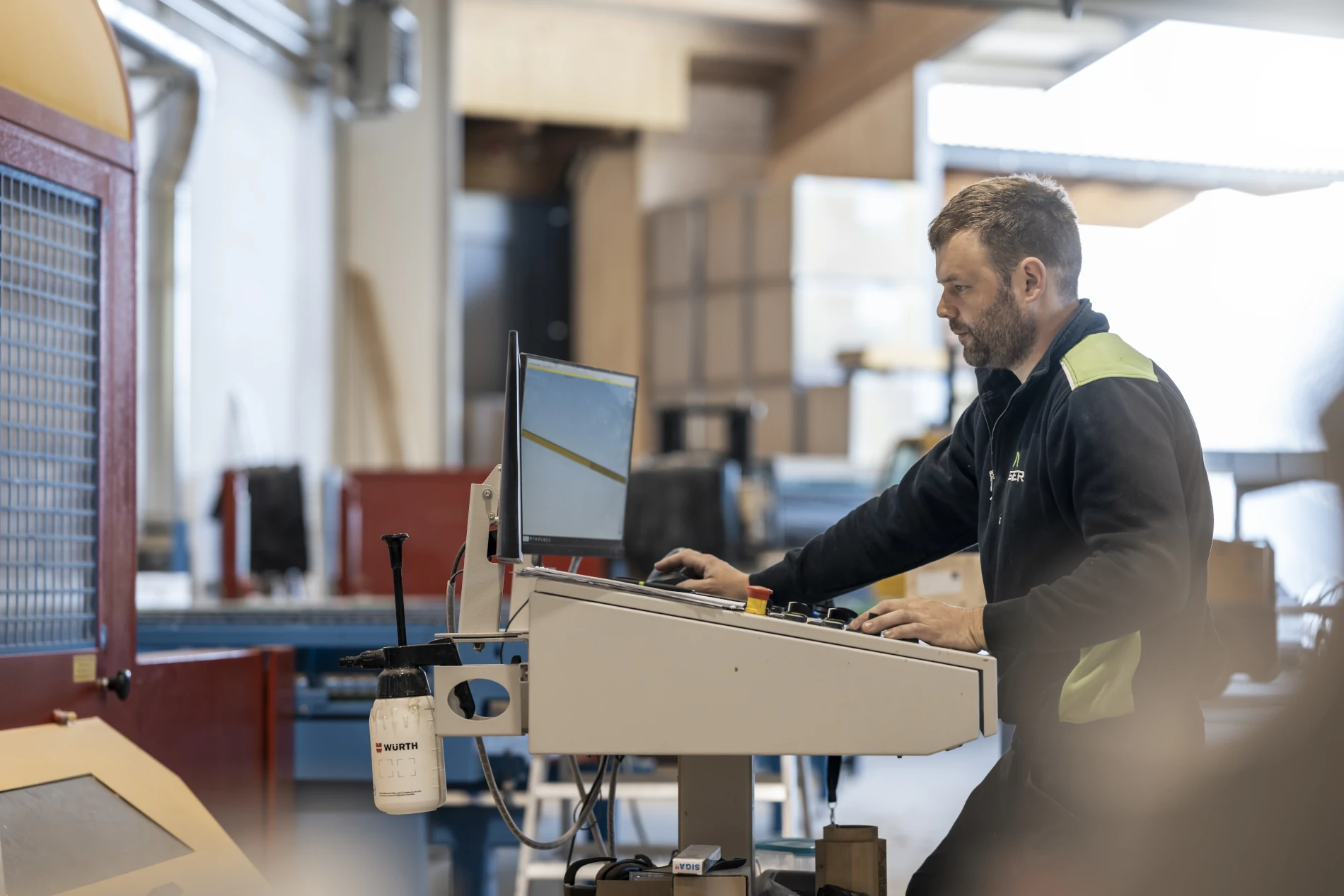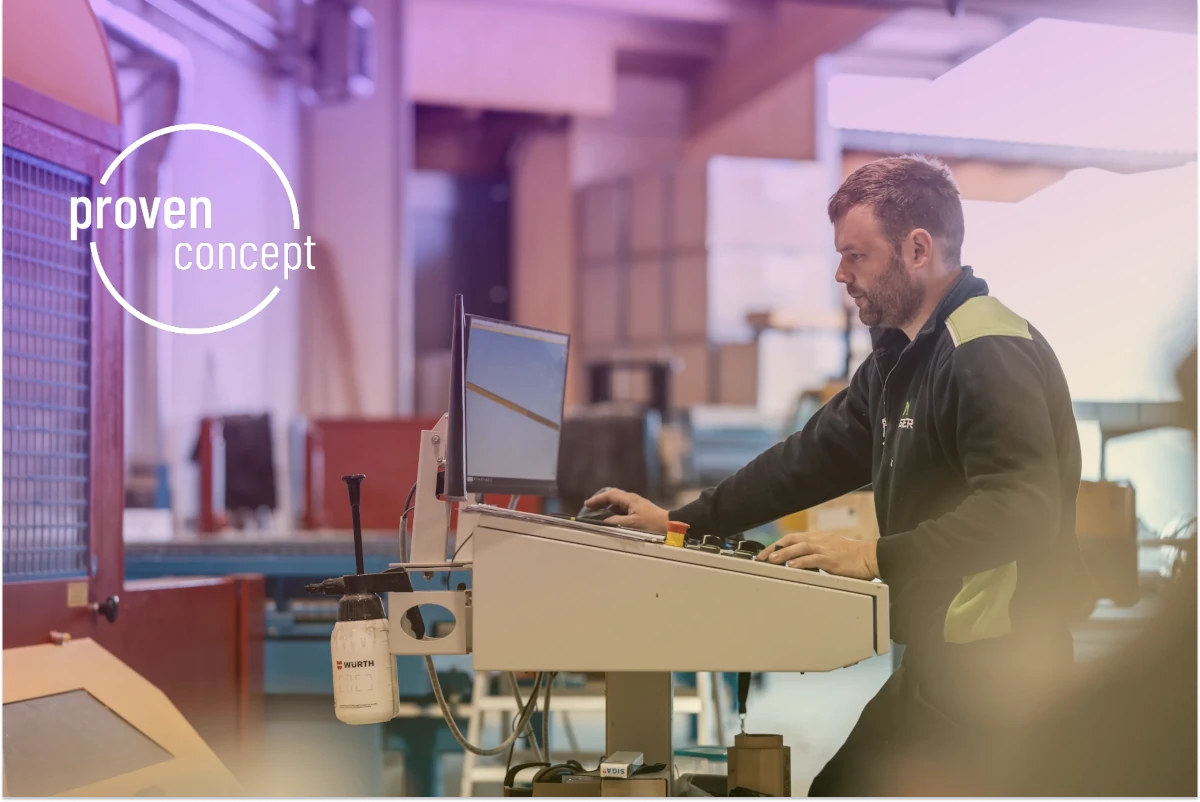Limendo mERP for Production – Efficient, automated, transparent.

The ideal basis for implementing data-driven decision-making.
The mERP Business Intelligence module uses a special replica database that ensures that extensive data processing and analysis do not impair the speed and performance of the operational system. The data is replicated from the main database and processed in a separate environment. This allows large amounts of data to be analyzed without disrupting ongoing business operations.
The module focuses on the preparation of standard data from the areas of sales, production, purchasing, and financial key figures. This information is organized in so-called “cubes” – multidimensional data structures that enable in-depth analysis of complex relationships.
The data is visualized using Microsoft Power BI, a market-leading business intelligence solution according to Gartner Research. Power BI enables intuitive and understandable presentation of company data and offers cross-platform access: whether via iOS, Android, Windows, or macOS, the most important key figures are available at any time and can be viewed in real time. This is particularly advantageous when quick decisions are required or you are on the go.
A key advantage of the mERP Business Intelligence module is that its standard components are ready for immediate use. They are designed to greatly reduce the internal effort required for implementation and use. Companies can get started right away, without long development phases, and immediately benefit from data-based insights—saving time and resources.
In addition, the module offers comprehensive customization and expansion options. If there are special requirements, the solution can be individually configured so that all relevant data sources and key figures are included in the evaluations and reports. The reports can be tailored precisely to specific business needs.
In addition to classic static reports, the system provides interactive dashboards. These allow for a detailed analysis of company data and can be set up to display the most important key performance indicators (KPIs) in real time. This supports the continuous monitoring of company performance and enables immediate intervention in the event of deviations or critical developments.
- Intransparente Materialverfügbarkeit: Fehlende Echtzeitdaten über Lagerbestände, offene Bestellungen und Materialflüsse führen zu Versorgungsengpässen oder überhöhten Pufferlagerbeständen.
- Veraltete oder getrennte Planungssysteme: Wenn Stücklisten, Arbeitspläne und Fertigungsaufträge in Insellösungen oder Excel laufen, entsteht hoher Abstimmungsaufwand und Fehleranfälligkeit.
- Unklare Auslastung von Anlagen und Personal: Produktionskapazitäten werden nicht optimal genutzt, weil Schichten, Rüstzeiten oder Mitarbeiterverfügbarkeit nicht digital berücksichtigt werden.
- Qualitätsdifferenzen und Dokumentationsmangel: Abweichungen in Prozessen oder Prüfabläufen werden nicht lückenlos dokumentiert – das birgt Risiken bei Reklamationen oder Zertifizierungen.
- Schwierige Analyse und Prognose: Der Mangel an konsolidierten Daten erschwert das Erkennen von Trends, Kostenabweichungen oder Optimierungsfeldern.
The solution: Production management with mERP – Overview of features.
With mERP, production processes become digital, integrated, and smarter:
- No performance losses during ongoing operations.
- Maximum data security and consistency.
- Capability for comprehensive, multidimensional analyses.
- Independent testing and evaluation environment.
- Cost savings compared to other well-known methods, such as Microsoft Azure Databricks, thanks to its open-source nature.
Production Planning & Control
- Assignment of production orders based on capacity and material availability
- Prioritization of orders by customer value, delivery date, or product segment
- Setup time management, batch size optimization, and buffer times can be planned
- Visualization of the production sequence and potential bottlenecks
Materials & Bills of Materials (BOM)
- Management of multi-level bills of materials (BOMs), variants, and spare parts
- Traceability of material batches and serial numbers
- Automatic material reservation based on production orders
- Integration with purchasing to synchronize material inventories and reorders in real time
Resources and Personnel
- Integration with the HR module for employee scheduling
- Consideration of shift schedules, qualifications, and availabilities
- Real-time overview of machine and equipment utilization
- Option for maintenance cycles and scheduled servicing
Quality & Inspection Processes
- Integration of inspection plans and acceptance processes into the production workflow
- Documentation of deviations and corrective actions
- Quality metrics and traceability down to the batch level
Reporting, Analytics & BI
- KPI dashboards for lead times, scrap rate, and machine utilization
- Ad-hoc analyses with drill-down capability down to batch or document level
- Automatic data warehouse and integration with Limendo mERP BI (data warehouse and Power BI setup)
- Cost and contribution margin analyses along the production chain
Modularity & Interfaces
- The mERP model allows modular expansion (e.g., starting with production modules, later adding purchasing, controlling, etc.)
- Offene API-Standards & API-Hub zur Integration mit Maschinensteuerungen oder MES-Systemen
Proven Concept - Aktuelle Fallbeispiele aus Produktion und Handwerk.

Von der zentralen, Datenschutz-konformen Mitarbeiterverwaltung über die Kapazitätsplanung, über digitale Betriebsaufträge und die vollständige Nachverfolgbarkeit von der Bestellung bis zur Baustelle unterstützt mERP den Qualitätsanspruch des Südtiroler Traditionsunternehmens Aster in Jensien.
Hier geht es zur Fallstudie
Das Ergebnis: Effiziente Produktion, weniger Störungen, bessere Rentabilität.
Mit mERP in der Produktion erreichen Unternehmen:
- Erhöhte Termintreue durch präzise Planung und Materialverfügbarkeit.
- Geringere Durchlaufzeiten durch optimierte Abläufe und weniger Leerlauf.
- Reduktion von Ausschuss durch Qualitätsmonitoring und Prüfintegration.
- Bessere Auslastung von Anlagen und Personal.
- Transparente Kostenführung durch integriertes Reporting.
- Skalierbarkeit: Wenn Produktionsvolumen wächst, passt sich das System mit – ohne große Migrationen.
Produzierende Unternehmen bauen damit eine digitale, verlässliche Basis für kontinuierliche Prozessoptimierung und datengetriebene Entscheidungen.
Fazit
Limendo mERP eignet sich für Produktionsbetriebe aller Art unabhängig vom zu produzierenden Gut. Dank Optimierung der Lagerverwaltung, Kapazitätsplanung, Auftragsabwicklung über Betriebsaufträge und definierte Arbeitsstationen sowie der nahtlosen Anbindung von Maschinen und dem damit verbundenen Monitoring und Qualitätsmanagement lassen sich die kompletten betrieblichen Abläufe digital zentral verwalten und von der Warenannahme bis zum Einbau am Zielort im Detail nachvollziehen.
If you need customization or any other assistance, please feel free to reach out to us through the contact methods below!


